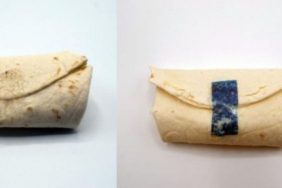Photo: Fabrice LEROUGE (Getty Images)
Scientists have known about a material called graphene for years. It’s a form of carbon whose thickness is that of a single atom but whose conductivity and strength are superior to copper and steel, respectively. Despite all this, people haven’t really managed to find some practical use for this material, till now. A group of students from the Rice University experimented with lasers and created edible graphene engravings on foods like toasts and potatoes. At a first glance, this seems like an over-complicated food tattoo, but it’s a lot more than that. In fact, this new method might change the way our food looks completely.
We’ve already mentioned that graphene is extremely conductive and can create functioning electrical circuits on your food. Why is that important? Because it opens up a range of possibilities in the future. Your food can connect to various devices, it can contain information or, most importantly, warn you about health risks. For example, the color of this edible graphene tattoo can change if it detects harmful elements or if the food has gone bad. Besides that, you can include other information like the details about the manufacturer, the origin of that particular product, and even check the entire delivery route to the store. Possibilities are endless.
Now, some might naturally ask whether it’s safe to consume this edible graphene and why? Well, first of all, marking food with edible stamps is not something new. People have been doing that for years. Health inspections often leave edible stamps on the meat to signify the quality and label the meat as safe. A tattoo that is the thickness of a single atom is certainly safer than any ink used by the inspectors. On top of that, graphene is created from the carbon found in the food itself. The process of engraving doesn’t add anything. It simply modifies the surface to create this specific type of carbon. Finally, when you weigh in the risks, even if it proves to be somewhat harmful in the future, graphene will certainly do more good than harm by preventing vicious food poisonings or even diseases.
In case this idea of an edible graphene doesn’t come to life, there are still other options for this technology. The Rice University students didn’t just try their laser method on food, but also on cardboard, paper and cloth. So, in the future, we might all be wearing interactive clothing that, for example, changes during different weather conditions, or allows you to communicate with others using a wearable phone. It may sound silly right now, but who knows what we might expect from this technology. It is something to think and dream about.







